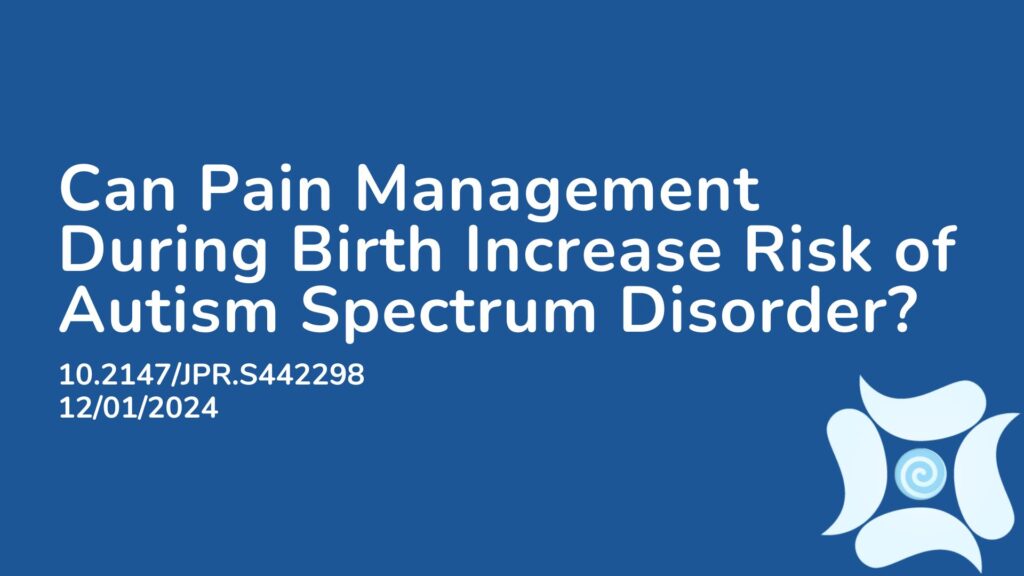Summary:
Autism spectrum disorder (ASD), characterized by social impairments and repetitive behaviors, is influenced by both genetic and environmental factors. The genetic aspect entails a 25% recurrence rate among siblings, a 50%-80% likelihood in identical twins, and up to 30% in non-identical twins. Environmental factors include parental age, maternal health, and toxin exposure. Studies have explored the link between perinatal events like complicated births and preeclampsia, with cesarean delivery showing an increased risk of ASD. Epidural labor analgesia (ELA), an effective method for pain relief during labor, has raised concerns about its safety regarding ASD. While ELA has no direct impact on neonatal outcomes, a study involving 147,895 live births reported a 37% increased risk of ASD in offspring associated with ELA. This systematic review found a slightly elevated risk of ASD in children born to mothers who received ELA. However, caution is warranted due to low-quality evidence, and further research is imperative to address confounding biases for a comprehensive understanding.
Abstract:
Purpose: Many studies have focused on the association between Autism spectrum disorder (ASD) and epidural labor analgesia (ELA), which is the most effective way to manage labor pain. The purpose of this meta-analysis was to summarize the current state of the association between ELA and ASD.
Methods: A search of the literature yielded 201 relevant studies, of which 7 cohort studies met our inclusion criteria. Two independent reviewers screened the inclusion results, extracted data, and assessed the risk of bias and quality of evidence.
Results: Compared to parturient who did not receive ELA, parturient who received ELA had a slightly increased risk of ASD (adjusted hazard ratio [aHR], 1.12; 95% confidence interval [CI], 1.06–1.17; I2, 69%; P < 0.001; seven studies). After excluding one literature (aHR, 1.09; 95% CI, 1.06–1.12; I2, 4%; P < 0.001; six studies). The sensitivity analyses had consistent outcomes with the main analyses involving siblings (aHR 1.11; 95% CI 1.03–1.19), cesarean section and instrumental deliveries (aHR 1.07; 95% CI 1.03–1.10), non-overlapping populations (aHR 1.09; 95% CI 1.05–1.12), full-term birth populations (aHR 1.10; 95% CI 1.06–1.14), and studies assessed to have moderate risk of bias (aHR 1.09; 95% CI 1.02–1.16).
Conclusion: This meta-analysis revealed a modest positive association between ELA and ASD, acknowledging a slight potential risk. However, it is important to note that this risk cannot be completely dismissed due to the possibility of bias and this association is based on low-quality evidence. Future studies are required to assess and mitigate different confounding biases and investigate the time-dose-response relationship.
Article Publication Date: 12/01/2024
DOI: 10.2147/JPR.S442298




